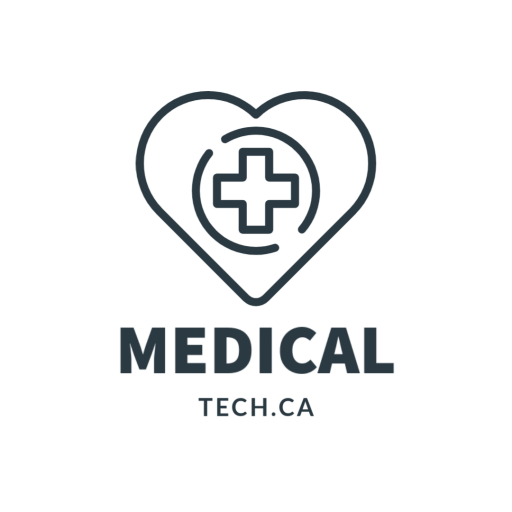
by medicaltechont | Dec 13, 2015 | Cloud, eHealth, EHR, Technology, United States
In 1986, a person with lung cancer would be linked to approximately two types of disease. After the genome sequencing was completed in 2003, the medical community was able to find seven other molecular diseases associated to lung cancer and there are more to be discovered.
The access to new molecular data meant people had an increased chance of surviving lung cancer, whereas before the disease was considered a death sentence.
The original human genome project took 13 years to complete the sequence of chemical base pairs which make up human DNA at a cost of $3 billion. Today, this same process takes two days at cost roughly $15.
At the SAP Spotlight Tour earlier this week, healthcare professionals from CancerLinq, the Stanford University department of medicine and SAP’s own chief medical officer made a plea for more patient data to be made available in an effort to gain new insights for healthcare. The ultimate goal of this effort is to provide personalized medicine and treatment.
Read more: http://www.itworldcanada.com/article/why-big-data-means-big-changes-for-personalized-healthcare/379274#ixzz3u8EWcEkv
or visit http://www.itworldcanada.com for more Canadian IT News
Read more: http://www.itworldcanada.com/article/why-big-data-means-big-changes-for-personalized-healthcare/379274#ixzz3u8EJUI00
or visit http://www.itworldcanada.com for more Canadian IT News

by medicaltechont | Nov 28, 2015 | Canada, Privacy, Security, Technology, United States
With Cyber Monday just around the corner, many people still wonder if it is safe to buy online during end-of-the-year sales events.
Of course it is safe in the sense that you won’t be pushed, hit, or crushed by other customers who also want to get their hands on the big deals. But is your credit or debit card information safe when you shop online? If you take a few basic precautions, you can enjoy the big discounts and not worry about getting into trouble.
Historically, November and December are the months with the most online transactions, and are therefore the months in which cyber-criminals are the most active.
We will enumerate the top five security threats you may encounter when shopping online and give you hints about how to shop safely on these dates.\
Read more: http://www.itproportal.com/2015/11/28/top-5-cyber-monday-security-threats-and-what-to-do-about-them/#ixzz3snzVP4ZL

by medicaltechont | Sep 29, 2015 | United States
A top Texas Medical Center executive described a plan Thursday for a major medical research campus that would bring together four institutions and contain multiple components, including hotel rooms, restaurants and bars, green space and an enormous plaza shaped like a double helix, a nod to the medical description of intertwining strands of DNA.
The proposed project, still in the conceptual stage, would cost $1.5 billion and represent a new model of collaboration at Houston’s premier medical complex, said William McKeon, executive vice president, chief strategy officer and chief operating officer of the Texas Medical Center.
The University of Texas, Texas A&M, Baylor College of Medicine and the University of Texas M.D. Anderson Cancer Center would anchor the new TMC3 Innovation Campus. The number 3 refers to the “third coast.”
http://www.houstonchronicle.com/business/medical/article/Proposed-research-campus-would-encourage-6528011.php

by medicaltechont | Sep 27, 2015 | Canada, United States
Spending by the Medical Research Council (MRC) on cancer research has fallen by a third since David Cameron became prime minister, according to figures released on Thursday.
The amount spent by the organisation on projects relating to the treatment of cancer has fallen from a peak of £112m in 2011 to £76.2m in 2014, according to the data released by the Department for Business Innovation and Skills.
http://www.theguardian.com/science/2015/sep/24/medical-research-council-cancer-funding-down-by-a-third-since-2010

by medicaltechont | Mar 8, 2015 | Canada, United States
Technology entrepreneur Jonathan Bush says he was recently watching a patient move from a hospital to a nursing home. The patient’s information was in an electronic medical record, or EMR. And getting the patient’s records from the hospital to the nursing home, Bush says, wasn’t exactly drag and drop.
“These two guys then type — I kid you not — the printout from the brand new EMR into their EMR, so that their fax server can fax it to the bloody nursing home,” Bush says.
In an era when most industries easily share big, complicated, digital files, health care still leans hard on paper printouts and fax machines. The American taxpayer has funded the installation of electronic records systems in hospitals and doctors’ offices — to the tune of $30 billion since 2009. While those systems are supposed to make health care better and more efficient, most of them can’t talk to each other.
Bush lays a lot of blame for that at the feet of this federal financing.
“I called it the ‘Cash for Clunkers’ bill,” he says. “It gave $30 billion to buy the very pre-internet systems that all of the doctors and hospitals had already looked at and rejected,” he says. “And the vendors of those systems were about to die. And then they got put on life support by this bill that pays you billions of dollars, and didn’t get you any coordination of information!”
Click here to read more

by medicaltechont | Feb 14, 2015 | United States
Modernizing Medicine, creator of the Electronic Medical Assistant (EMA), a cloud-based, specialty-specific electronic medical record (EMR) system, on January 29 responded to recent announcements from the Centers for Medicare & Medicaid Services (CMS), the U.S. Department of Health & Human Services (HHS) and leading health insurers, regarding the concerted push away from fee-for-service healthcare models in favor of outcome-based reimbursements.
CMS has announced that 85 percent of Medicare payments in 2016 could be based on quality of care, and that number could grow to 90 percent in 2018. Additionally, a UnitedHealth Group executive was reported to have said that the company plans to increase value- based payments to doctors and hospitals by 20 percent this year, forecasting over $40 billion in payments tied to value or quality of care.
“This major shift in payment models requires the right tools and reporting systems if physicians and provider organizations want to safeguard against penalties from volume-based medicine and benefit from related incentives,” said Modernizing Medicine’s CEO and Co- founder Dan Cane in a statement issued following the recent announcements from CMS and HHS. “Modernizing Medicine is deeply committed to the physicians and healthcare professionals we serve, and we believe that health information technology vendors share a large part of the responsibility to ease the impending transition toward quality reporting and outcomes-based reimbursements.”
Unlike EMRs using templates or macros, EMA was designed with unique structured data technology that handles the Value-based Payment Modifier and enables quality reporting including Physician Quality Reporting System (PQRS) program reporting. Cane believes Modernizing Medicine is in a market leading position in providing a system that addresses this burden for physicians, enabling them to focus on practicing medicine without fear of the upcoming changes.
Read more







